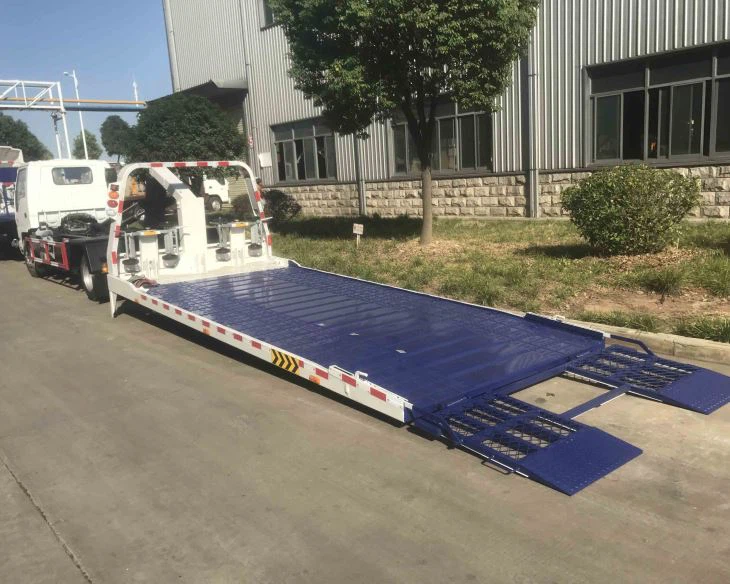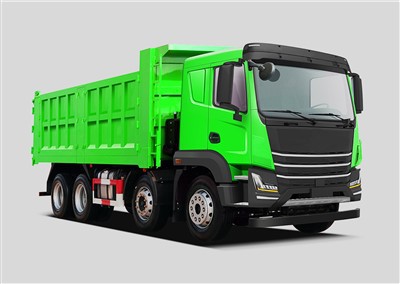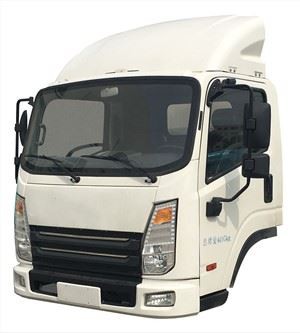Labrie Refuse Trucks: The Ultimate Guide to Waste Management Solutions

Waste management is a critical aspect of keeping our cities clean and sustainable. Among the various options available in the market, Labrie refuse trucks have emerged as an industry leader. Known for their efficiency, durability, and innovative design, these trucks play a vital role in collecting and transporting waste materials. In this comprehensive guide, we will explore everything you need to know about Labrie refuse trucks, including their features, benefits, maintenance, and much more.
Understanding Labrie Refuse Trucks
Labrie Environmental Group is a renowned manufacturer of refuse collection vehicles. Founded in 1968, the company has established a reputation for producing high-quality, reliable waste collection solutions. Labrie trucks are designed for various waste management tasks, including residential, commercial, and industrial waste collection. Their innovative designs improve efficiency and reduce operational costs.
The History of Labrie Trucks
Labrie began with a vision to improve waste collection vehicles. Over the years, they have introduced various models designed to meet the evolving needs of waste management. Their commitment to quality and innovation has made them a favorite choice for municipalities and waste management companies worldwide.
Key Milestones
- 1968: Labrie is founded in Canada.
- 1984: Introduction of the first automated side-loader refuse truck.
- 2002: Launch of the latest generation of Labrie refuse trucks.
- 2019: Expansion into electric refuse trucks for sustainable waste management.
Types of Labrie Refuse Trucks
Labrie manufactures a diverse range of refuse trucks to cater to different waste management needs. Here are some popular models:
1. Labrie Expert
The Labrie Expert is ideal for residential waste collection. This model features a lightweight design that maximizes payload capacity and fuel efficiency. Its advanced hydraulic mechanism offers powerful lifting capabilities, making it easy to collect and transport waste bins.
2. Labrie Automizer
The Automizer is designed for efficient side-loading. It is equipped with state-of-the-art automation technology that allows for a quick and safe waste collection process. This model is popular among municipalities looking to reduce labor costs.

3. Labrie Flex
The Flex model is versatile and can handle a range of waste types, including yard waste and recycling. This truck features a customizable payload system, allowing operators to tailor the vehicle to their specific needs.
Key Features of Labrie Refuse Trucks
Labrie refuse trucks are packed with features that enhance performance, efficiency, and safety. Below are some standout features:
High Payload Capacity
Labrie trucks are designed with lightweight materials that do not compromise strength. This design principle allows them to carry heavier loads without exceeding legal weight limits.
Advanced Hydraulic Systems
The hydraulic systems in Labrie trucks are engineered for optimal performance. They provide fast lifting and lowering capabilities, enabling quick collection times.
Environmental Sustainability
Modern Labrie refuse trucks can be powered by alternative fuels, including compressed natural gas (CNG) and electricity. These eco-friendly options are designed to reduce carbon emissions and help municipalities comply with environmental regulations.

User-Friendly Controls
Labrie trucks come with intuitive controls and dashboards that simplify operation. This user-friendly design minimizes training time and human error, making it easier for drivers to perform their tasks efficiently.
The Benefits of Using Labrie Refuse Trucks
Investing in Labrie refuse trucks can bring numerous benefits to waste management operations. Some of the most significant advantages include:
Increased Efficiency
The innovative designs and automation features enable quicker waste collection and reduce the time spent on routes, enhancing overall operational efficiency.
Cost Savings
With high payload capacities and advanced hydraulics, Labrie trucks maximize collection volumes while minimizing fuel consumption. This leads to substantial cost savings over time.
Reduced Environmental Impact
By utilizing alternative fuel options and reducing fuel consumption, Labrie trucks contribute to a more sustainable waste management system.
Maintenance Tips for Labrie Refuse Trucks
Proper maintenance is essential to keep Labrie refuse trucks running smoothly and efficiently. Here are some practical maintenance tips:
Regular Inspections
Conduct routine inspections to identify any potential issues before they escalate. Check hydraulic systems, brakes, and other critical components for wear and tear.
Keep It Clean
Regular cleaning of the truck, both inside and out, helps prolong its lifespan. Remove waste debris and wash the exterior to prevent rust and corrosion.
Schedule Professional Maintenance
Work with qualified technicians for periodic professional maintenance. This includes servicing the hydraulic system, checking engine performance, and maintaining the electrical components.
Innovative Technologies in Labrie Refuse Trucks
Labrie is at the forefront of incorporating technology into waste collection. Here are some notable innovations:
Telematics Systems
Advanced telematics systems provide real-time data on truck performance, such as fuel consumption and route efficiency. This helps companies optimize operations and manage costs effectively.
Camera Systems
Many Labrie trucks come equipped with camera systems for enhanced visibility. These systems improve safety by allowing drivers to have a clear view of their surroundings while operating the vehicle.
Practical Examples of Labrie Refuse Truck Applications
Businesses and municipalities worldwide have successfully integrated Labrie refuse trucks into their waste management operations. Below are a few practical examples:
Case Study 1: City of Toronto
The City of Toronto replaced their aging waste collection fleet with Labrie refuse trucks to improve efficiency. The new automated side-loaders increased collection rates by 30%, leading to reduced operational costs.
Case Study 2: Waste Management Company
A major waste management company utilized Labrie Flex models to cater to varying residential and commercial collection needs. The customizable payload system helped minimize service disruptions during peak waste collection seasons.
Case Study 3: Recycling Initiatives
Several municipalities across Canada have adopted Labrie trucks for their recycling initiatives. The ability to collect mixed-waste streams has enhanced recycling rates and promoted sustainability.
Frequently Asked Questions (FAQs)

1. What makes Labrie refuse trucks stand out from other brands?
Labrie refuse trucks are known for their innovative designs, high payload capacity, and fuel efficiency. The company also emphasizes environmental sustainability with alternative fuel options.
2. How often should Labrie refuse trucks be serviced?
It is recommended to perform routine inspections every 2-3 months, depending on usage. More extensive service checks should occur annually.
3. Can Labrie trucks operate in harsh weather conditions?
Yes, Labrie refuse trucks are designed to operate effectively in various weather conditions. However, regular maintenance is essential to ensure safe operation during winter or heavy rain.
4. Are Labrie refuse trucks suitable for small municipalities?
Absolutely! Labrie offers a range of models that can be tailored to the specific needs and budgets of small municipalities.
5. What is the average lifespan of a Labrie refuse truck?
With proper maintenance, a Labrie refuse truck can last between 10 to 15 years, depending on usage and care.
6. Are electric Labrie trucks available?
Yes, Labrie has introduced electric refuse trucks as part of their commitment to sustainability and reducing carbon emissions.
Conclusion
Labrie refuse trucks represent the future of waste management with their innovative designs and commitment to efficiency. Understanding their features, benefits, and maintenance practices can help municipalities and businesses make informed decisions when investing in waste management solutions. Whether considering a new purchase or looking for ways to enhance existing operations, Labrie refuse trucks provide the technology and reliability needed to meet the demands of modern waste collection.
